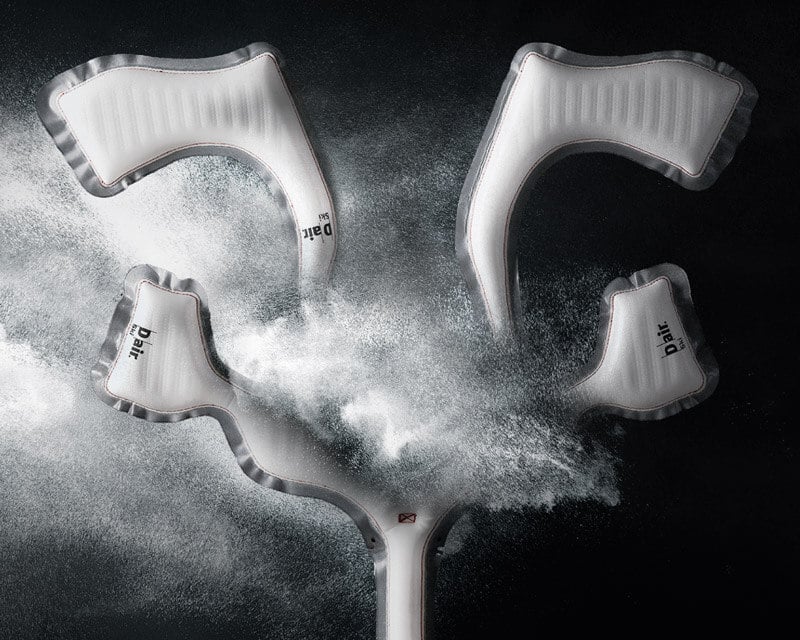The D-air® Ski was designed in 2012 to help cope with the increasingly extreme conditions that World Cup and World Championship alpine skiers face. It is the first piece of protective ski equipment to use an electronic ‘brain’ to recognize the dynamics of a fall and activate the airbag in time.
The D-air® Ski’s technology was created specifically for alpine skiing, but it has inherited some of the key features of its motorcycle rider counterpart. In this case, D-air® was created to put MotoGP™ riders in the best performance conditions for races, which are moving increasingly close to the limit as mechanical vehicles develop exponentially.

The D-air® Ski 2, which has evolved from the previous system, is composed of two separate but completely integrated units – control unit and airbag. The D-air® control unit works in synergy with several sensors to detect every movement that the skier makes. Data sent by accelerometers, gyroscopes and GPS is analyzed a thousand times per second by an intelligent algorithm capable of distinguishing the dynamics of an accident from those of a normal race. Once the typical movements of a fall are identified, the electronic component sends a signal to the gas generator, which inflates the bag in a few thousandths of a second.
The D-air® Ski 2 airbag is an engineered surface capable of covering the areas most exposed to impacts on the upper part of the athlete’s body – It protects the skier’s chest better than any traditional protector. Airbag inflation is fully controlled, as the patented microfilament technology ensures uniform pressure and thickness, and therefore safety, over the entire surface. Unlike the previous system, the D-air® Ski 2 airbag allows up to 3 activations before it needs to be replaced; the gas generator can also be changed independently due to the Fast Replacement System.
.jpg)
The intelligent system has two activation programs, which have undergone live study over years of testing and research. A highside, probably the most dangerous of falls, is when the skier is tossed in the air; in this case D-air® activates independently before impact with the ground. The second program is activated in the event of a significant slide during which the athlete begins a potentially very dangerous roll.
D-air®, unlike other traditional protectors, can be neither seen nor felt until you need it. When deflated, the airbag lets the athlete move in complete freedom so as not to impede performance or safety. The control unit and gas generator, which are also imperceptible due to their insignificant weight and bulk, are integrated perfectly into the back protector. D-air® is there, with the skier, ready to spring into action, but only if needed.
The D-air® Ski was presented in 2012, as a prototype. Only two years later it made its debut in the World Cup and its potential soon swept away any skepticism due to the additional layer of protection. It immediately became the benchmark for athlete safety in the racing, downhill and Super-G disciplines, also due to its ergonomics and lightness. Another three years later, in 2017, Matthias Mayer won the Super-G in Kitzbühel, becoming the first skier to win a race wearing the D-air® Ski. From the 2024/2025 season, using an airbag protection system is mandatory for all athletes, men and women, in the Super-G and Downhill disciplines.
D-air® Ski 2 is the most advanced ski protection system, providing athletes with intelligent protection. Invisible and imperceptible until you really need it, the D-air® Ski 2 offers freedom and protection so that you can give it your all, while maximizing performance under the most extreme racing conditions.
The communication refers to the Dainese D-air® Smart Chest protector on the chest, CE certified, Category II - Level 2 by the Certification Body authorized by the Government Authority. For further details please read the product user manual.